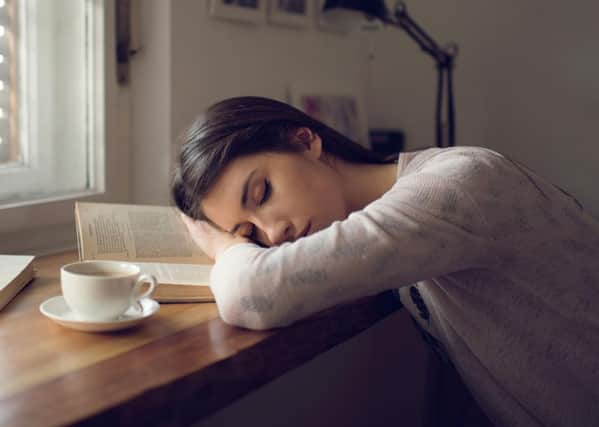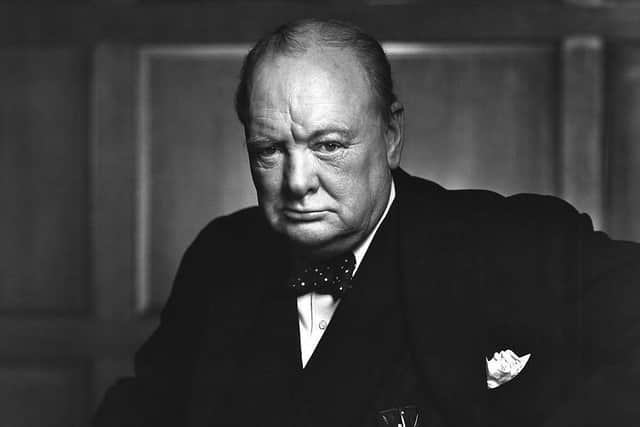The case for making the power nap a part of the conventional working day


Throughout history, the benefits of the power nap, the siesta or ‘polyphasic sleeping’ (wherein you nod off in two chunks each day, Spanish style) has been repeatedly recognised.
The philosopher Aristotle, former British Prime Minister Winston Churchill, and world-changing physicist Albert Einstein were all noted power nappers and even a text as old as Homer’s Odyssey references the benefits of the occasional impromptu REM interlude.
Advertisement
Hide AdAdvertisement
Hide AdIt is said that during the Second World War, Churchill would nap for at least an hour in the early afternoon (he had a lot on his mind facing down Hitler) and apparently observed in his wartime memoirs that “nature had not intended mankind to work from eight in the morning until midnight without the refreshment of blessed oblivion, which, even if it lasts 20 minutes, is sufficient to renew all the vital forces”.


Aristotle, one of the greatest philosophers in human history too extolled the virtues of napping and the semi-lucid state one can reach between sleep and wakefulness as a fertile source of inspiration for his innovative feats of intellection, observing that “often, when one is asleep, there is something in consciousness which declares that what then presents itself is but a dream”.
The eccentric master of surrealist art, Salvador Dali, in his 50 Secrets of Magic Craftsmanship for aspiring painters, outlined somewhat nutty tips for the one-second micro-nap while on the job, including sitting upright, key in hand and upturned plate beneath; once asleep the key drops and the emergent clang ensures instant revival (not really much restoration in a one-second nap, but many an exhausted office worker has undoubtedly had one during a lengthy board meeting without having to employ plates or keys).
Leonardo da Vinci, who gave us the mysterious wonder that is the Mona Lisa and the splendour of The Last Supper, was said to function on two hours of sleep a day, following a form of polyphasic sleep called the Uberman sleep cycle, which involves 20-minute naps every four hours.
Advertisement
Hide AdAdvertisement
Hide AdBringing the popularity of the power nap into more recent times, former American President John F Kennedy was said to take a daily post-lunch nap with his wife Jackie, doors closed, phone calls barred and absolutely no paper work delivered.
Bill Clinton, who apparently nodded off during Joe Biden’s first presidential address, once said: “On the days when I’m a little short of sleep, I try to work it out so that I can sneak off and just lie down for 15 minutes, half an hour, and it really makes all the difference in the world.”
Ronald Reagan is said to have often done the same, and Margaret Thatcher, who famously subsisted on four hours sleep a night, was not immune to the joy of the catnap.
Even more surprising, the Queen was once caught dozing on the job during a lecture on medicine and magnets in Dusseldorf in 2004 (the subject matter was indeed soporific). Some have wondered if the secret to her long reign has not in fact been the power nap, although it would be most unseemly to speculate about what goes on behind the hallowed doors of Buckingham Palace.
Advertisement
Hide AdAdvertisement
Hide AdThere is now evidence to suggest that employers are waking up to the benefits of flexible working hours and even the idea that the power nap might be in some sense incorporated into the working day as a way of boosting employee’s functionality and creativity.
Think of companies like Google, which provides its staff with nap pods they can avail of (within reason) during the standard office-based shift - might corporations worldwide benefit from allowing employees a 20-minute power nap as part of their break in productivity?
In August the National Trust revealed plans to move towards “Mediterranean working hours” at some of its sites in the south-east of England, although the idea behind this was to help staff cope with rising annual temperatures.
Certainly, in countries like Spain, the three hour long siesta is a fundamental and sacrosanct part of the working day, and a lengthy, languorous lunch is routinely followed by a lengthy nap as the noon day sun makes all forms of labour torturous. The benefits of allowing employees to nap, it should be noted, has been observed since the 1980s, when NASA observed how effective it was for astronauts, and extended the opportunity for a short burst of shuteye to staff on the ground.
Advertisement
Hide AdAdvertisement
Hide AdMatthew Walker, professor of neuroscience at UC Berkeley and the author of the bestselling book Why We Sleep, recently told the Guardian he thinks employers prioritising sleep is a step forward, however they enable it.:“Sleep is the best form of physiologically injected venture capital you could ever wish for. When you’ve had insufficient sleep you can’t think as quickly and you’re not as creative.”
So might you do better on the Jones’ report or endless spreadsheets if you were allowed a nap before or after your lunch hour instead of mainlining more coffee and faffing about on Facebook when the exhaustion of the rigid nine to five regime (what a way to make a living) becomes all too much for your overloaded brain?
On the flipside, some sleep scientists caution that napping during the day can disrupt your sleeping pattern, making it harder to fall asleep at night, although for this to become a problem the power nap would really need to become an extended snooze, something with managing directors are highly unlikely to sanction,
“More breaks is better than one,” said Mahir Yilmaz, from the Energy Project, citing a study his consultancy conducted with the Harvard Business Review that found that for every additional break employees took, their wellbeing, creativity and focus increased.
Advertisement
Hide AdAdvertisement
Hide AdBut arguably the most important thing is that employees are given the flexibility to choose the working pattern that benefits them, said Tim Sharp, employment rights lead at the Trades Union Congress.
“Things that maybe look like flexible working can be very disadvantageous to workers if it doesn’t fit in with where they’re located and travel arrangements” he said.
Due to the disruptions of the Covid pandemic, the recourse to home and remote working, which has arguably changed the iron clad structure of the working day, there has arguably been a broader cultural shift among employers in terms of how they comprehend the relationship between flexible working hours and productivity.
Camilla Kring, who runs the work-life balance consultancy Super Navigators, said the companies she works with are increasingly interested in harnessing different people’s sleep preferences and energy levels rather than opting for the one-size-fits-all 9-5pm hours of the 20th century. Times are changing, Covid has made flexible working hours more accessible for remote workers, who may decide to start earlier or work latter, with room for a restorative catnap in between Zoom meetings, that arguably boosts employee performance and supercharges creativity rather than undermining it.
Advertisement
Hide AdAdvertisement
Hide AdKring added: “I speak about the energy animals: if you’re a dromedary, you peak once per day, while camels peak before and after lunch. Then you’re a snake if you peak three times a day,” she said. “The more you can work in line with your energy levels, the more productive you can be.”
So, might somebody, somewhere, at a governmental level, consider making the power nap and sleep pods in offices part of a new post-Covid orthodoxy? We can but hope.
Comment Guidelines
National World encourages reader discussion on our stories. User feedback, insights and back-and-forth exchanges add a rich layer of context to reporting. Please review our Community Guidelines before commenting.